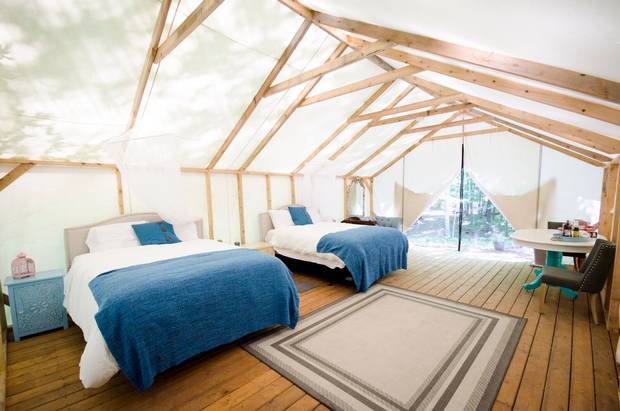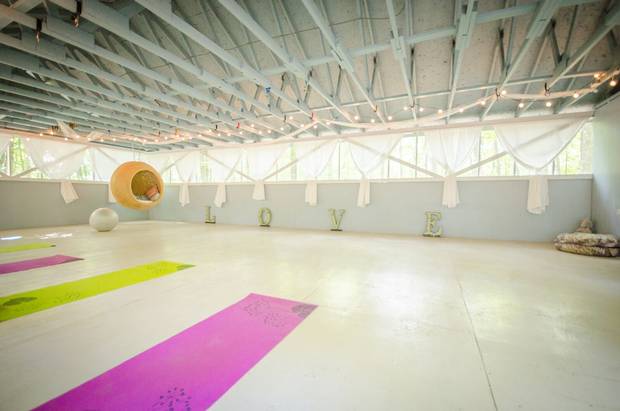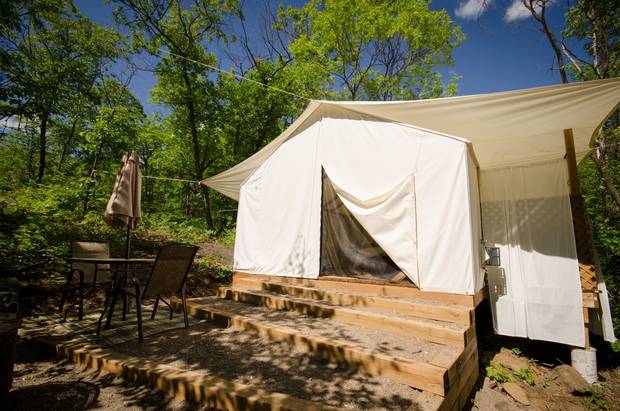In early 2013, the town of Renfrew, Ont., an hour west of Ottawa, was abuzz with the news of the pending sale of Storyland, a local amusement park for children for almost half a century.
"Everyone was talking about this place that had been running for 45 years as an amusement park and wondering what was going to become of it," says Nicole Laframboise, a former real estate agent and commercial developer. "And, of course, that's when I got interested."
After poking around the property in the snow, Ms. Laframboise says she recognized the property had "good bones" but didn't really know what could be done with the 89-acre fairytale-themed park, which came complete with Humpty Dumpty on a wall.
Founded by Dutch immigrants, Storyland was originally a collection of storybook characters and scenes built to amuse hikers venturing to nearby Champlain Lookout. In 1966, the theme park officially opened to the public with expanded story scenes, a playground and a windmill. By the time of its closure in 2008, under new owners, Storyland featured small rides, mini-golf and employees dressed as fairytale characters.
Eight months after word of Storyland's sale had spread, an auction was held on the property to allow the public to buy some of the park's more colourful display pieces, including its former main-gate mascot – a 3.6-metre-high, 360-kilogram fibreglass bunny rabbit.
"I only went to the auction to get the rabbit, for novelty's sake," she explains, but the feeling that this property had amazing potential still nagged at her. Three weeks later, the park owners dropped the property price by $100,000, which triggered a bidding war. In the end Ms. Laframboise purchased Storyland for $510,000.
But shortly after the sale, the former realtor was greeted with the reality of her rundown theme park property.
"The place was a disturbing mess. I'd find severed heads of dolls in the woods – it was absolutely something out of a slasher movie," she recalls. "Let's put it this way, I wouldn't go out there after dusk."
It took another 12 months, $200,000 and 45 commercial dumpsters to clean up the funfair remnants and lay the groundwork for Ms. Laframboise's brainchild, Elements Luxury Tented Camp and Nature Spa. Designed for the glamourous camper, or "glamper," Elements features an open-air yoga studio, eight luxury tents and six tiny homes. Inside the accommodation, glampers are treated to king-sized beds, fireplaces, eco toilets and "wilderness butlers."

Elements’ amenities include king-sized beds. ‘It’s a place for urban dwellers who haven’t had to the opportunity to connect with their natural surroundings in a while,’ Mr. Laframboise says.
Kayla Rekowski/Third Eye Photography
"It's a place for urban dwellers who haven't had to the opportunity to connect with their natural surroundings in a while," Ms. Laframboise says. "And we give them that opportunity in a very luxurious way."
Her story is not without precedent, it's just the latest in a trend that goes back decades. As some of Canada's amusement and theme parks reach the end of their life cycle, developers and entrepreneurs are reinventing these commercial properties thanks, in many cases, to their prime locations and large acreage. Some of the properties, like Storyland, are rural, but others are in urban areas with ever-increasing populations and a hunger for developable land.
For example, Sunnyside Amusement Park operated on Toronto's lakefront from the 1920s until it was demolished in 1955 to make way for the Gardiner Expressway. Maple Leaf Village, which started in 1979 in Niagara Falls, Ont., shuttered because of economic woes in the early 1990s and was subsequently replaced by the government-run Casino Niagara.
The attraction toward the country's amusement parks ebbs and flows as time marches on and generations opt to trade in their sometimes-outdated themes for more current entertainment. But they don't have to be rundown or defunct to spark a developer's imagination.
In 1995, R.J. Bennett and his daughter, Mary-Jean, purchased Bedrock City, a Flintstones-themed amusement park and waterslide that had operated in Kelowna, B.C., since the 1970s.
"We bought it out of receivership and Hanna-Barbera [the production company that created The Flintstones] had the rights, so we ran it as that," explains Ms. Bennett, president of development company Victor Projects Ltd.
The family operated Bedrock City for three years, "but the idea was always to redevelop," explains Ms. Bennett. "Eleven days of rain or more and we didn't make money."
The final nudge to start the park's regeneration came when Hanna-Barbera refused to renew its Flintstones copyrights. "So we had to tear it all down," explains Mr. Bennett, the former chief executive officer of Bedrock City. The park officially closed in 1998.
By 2000, the land had been almost entirely redeveloped into McCurdy Corner, a 14.2-acre shopping and entertainment complex complete with a 10-screen movie theatre, bowling centre and EnergyPlex – an indoor family recreation centre with rock climbing, trampolines and laser tag.

Elements Luxury Tented Camp, which also features an airy yoga studio, is just the latest venture that has taken over a former amusement park.
Kayla Rekowski/Third Eye Photography
"We did the redevelopment in a way that kept the entertainment or amusement idea," says Ms. Bennett, adding it's still a work in progress.
Developers such as Canadian shopping mall behemoth Cadillac Fairview are seeing the long game, too, when it comes to operational amusement parks, knowing they can profit from a functional business while they plot their redevelopment strategies.
In 1998, Cadillac Fairview bought the indoor amusement park Crystal Palace in Dieppe, N.B., a short drive from Moncton, as part of an asset purchase that included the neighbouring Champlain Place shopping centre.
Despite Crystal Palace being outside the company's traditional holdings, it operated the family entertainment space for more than 15 years.
"It's true that running an amusement park was really not our core business," says Danielle Lavoie, Cadillac Fairview's senior vice-president and portfolio manager for Eastern Canada. She explains that in the long run, "It made more sense for us to enhance and bring something very special to the property that would respond to the customer's needs and what the market was looking for."
At the time, Crystal Palace was the third-largest tourism destination in New Brunswick, according to the developer. But its replacement, a 110,000-square-foot Bass Pro Shop – the area's largest outdoor gear retailer – has drawn even more customers as part of an expansion of Champlain Place.
Service New Brunswick's 2017 assessment of the current property is almost $24.3-million.
"It's not a project we worked on for 15 years," says Ms. Lavoie. "Obviously we were looking at doing something that more closely reflected our core business, but we were waiting for the right opportunity."
